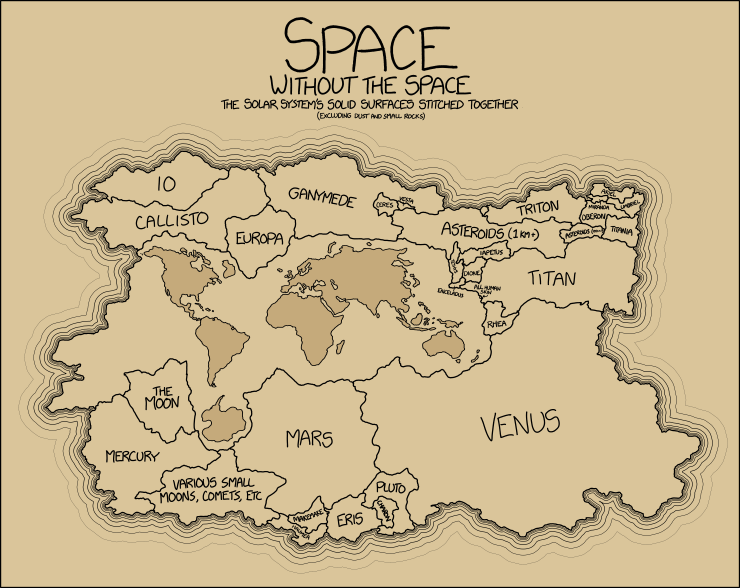July 2, 2014
#1389: Surface Area explain

[At the top of a map is a heading, with two sub headings and a note in brackets:]
Space
Without the space
The Solar System’s solid surfaces stitched together
(Excluding dust and small rocks)
[Below the headings there is a map with several distinct areas. Each area is labelled with a name or a description. This label is noted inside the area, except for areas that are too small; here the label is written outside and a line indicates which area the label belongs to. Only exception is the largest area, on which the contours of the Earth’s continents are drawn. Surrounding the map is wavy lines to indicate that this is either an island or one big super-continent placed in an even larger ocean.]
[Here below are the labels given as they appear in “normal” reading order in as read from left to right in the three main rows as will be indicated:]
[Row one, above the line defined by the general top of the Earth area:]
Io
Callisto
Europa
Ganymede
Ceres
Vesta
Asteroids (1 km+)
[Here – above the Asteroids area before the Triton area - is a small unlabelled area (the only other except Earth)]
Triton
Asteroids (100 m+)
Oberon
Miranda
Ariel
Umbriel
Titania
[Row two, the unlabelled Earth area’s row, but here only given those that are directly written to the right of this area:]
Tethys
Enceladus
Dione
Iapetus
All human skin
Rhea
Titan
[Row three, all the remaining items that are mainly below the Earth area:]
Mercury
The Moon
Various small moons, comets, etc
Mars
Makemake
Haumea
Eris
Pluto
Charon
Venus